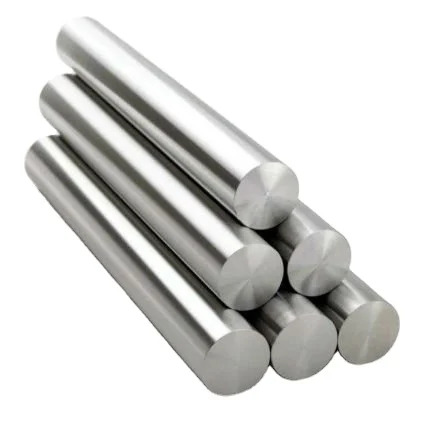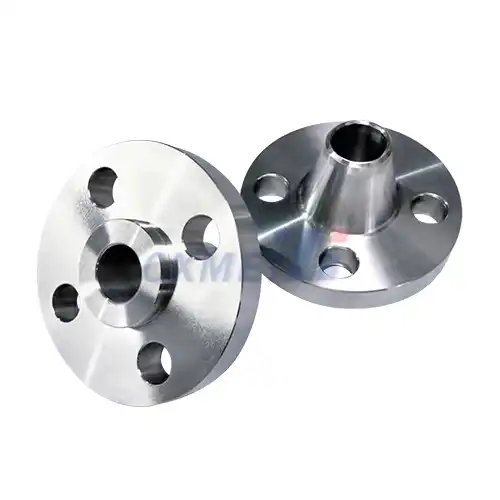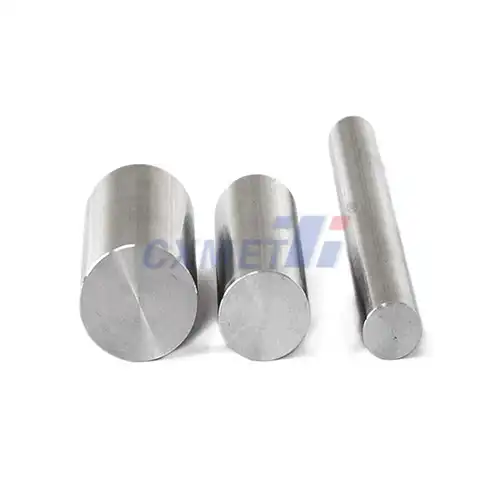- English
- French
- German
- Portuguese
- Spanish
- Russian
- Japanese
- Korean
- Arabic
- Greek
- German
- Turkish
- Italian
- Danish
- Romanian
- Indonesian
- Czech
- Afrikaans
- Swedish
- Polish
- Basque
- Catalan
- Esperanto
- Hindi
- Lao
- Albanian
- Amharic
- Armenian
- Azerbaijani
- Belarusian
- Bengali
- Bosnian
- Bulgarian
- Cebuano
- Chichewa
- Corsican
- Croatian
- Dutch
- Estonian
- Filipino
- Finnish
- Frisian
- Galician
- Georgian
- Gujarati
- Haitian
- Hausa
- Hawaiian
- Hebrew
- Hmong
- Hungarian
- Icelandic
- Igbo
- Javanese
- Kannada
- Kazakh
- Khmer
- Kurdish
- Kyrgyz
- Latin
- Latvian
- Lithuanian
- Luxembou..
- Macedonian
- Malagasy
- Malay
- Malayalam
- Maltese
- Maori
- Marathi
- Mongolian
- Burmese
- Nepali
- Norwegian
- Pashto
- Persian
- Punjabi
- Serbian
- Sesotho
- Sinhala
- Slovak
- Slovenian
- Somali
- Samoan
- Scots Gaelic
- Shona
- Sindhi
- Sundanese
- Swahili
- Tajik
- Tamil
- Telugu
- Thai
- Ukrainian
- Urdu
- Uzbek
- Vietnamese
- Welsh
- Xhosa
- Yiddish
- Yoruba
- Zulu
How Do MMO Probe Anodes Work in Cathodic Protection Systems?
2024-09-14 15:43:14
Mixed Metal Oxide (MMO) probe anodes are crucial components in modern cathodic protection systems, playing a vital role in preventing corrosion of metal structures in various industries. These innovative anodes utilize advanced materials and electrochemical principles to effectively distribute protective current and monitor the performance of cathodic protection systems. In this blog post, we'll explore the functionality of MMO probe anodes and their significance in maintaining the integrity of critical infrastructure.
What are the advantages of using MMO probe anodes over traditional anodes?
MMO probe anodes offer several significant advantages over traditional anodes in cathodic protection systems. These benefits have contributed to their widespread adoption across various industries, from oil and gas to marine applications.
1. Extended Lifespan: One of the primary advantages of MMO probe anodes is their exceptional longevity. Unlike conventional anodes made of materials such as graphite or high-silicon cast iron, MMO anodes can last up to 20 years or more in many applications. This extended lifespan is due to their unique composition, which typically includes a titanium substrate coated with a mixture of precious metal oxides. The coating's resistance to dissolution in harsh environments contributes to the anode's durability, reducing the frequency of replacements and associated maintenance costs.
2. Higher Current Output: MMO probe anodes can deliver a higher current output compared to traditional anodes of similar size. This increased efficiency is attributed to the large surface area of the oxide coating and its excellent electrical conductivity. The higher current output allows for more effective corrosion protection, especially in large-scale applications or areas with high corrosion risks. It also means that fewer anodes may be required to achieve the same level of protection, potentially reducing installation costs and simplifying system designs.
3. Lower Resistance: The unique properties of MMO coatings result in lower anode-to-electrolyte resistance compared to many traditional anode materials. This lower resistance translates to reduced power consumption and improved energy efficiency in cathodic protection systems. As a result, operating costs can be significantly reduced over the lifetime of the protection system, making MMO probe anodes an economically attractive option for long-term corrosion prevention strategies.
4. Dimensional Stability: MMO probe anodes maintain their shape and size throughout their operational life, unlike some traditional anodes that may erode or change shape over time. This dimensional stability ensures consistent performance and current distribution, leading to more reliable and predictable corrosion protection. It also simplifies the design and maintenance of cathodic protection systems, as engineers can more accurately predict the long-term behavior of the anodes.
5. Versatility: MMO probe anodes can be manufactured in various shapes and sizes, making them suitable for a wide range of applications. From small probes for localized protection to large mesh anodes for extensive structures, the versatility of MMO anodes allows for customized solutions to meet specific corrosion protection requirements. This flexibility is particularly valuable in complex environments where traditional anodes may be less effective or impractical to install.
How does the design of MMO probe anodes affect their performance in cathodic protection systems?
The design of MMO probe anodes plays a crucial role in determining their performance and effectiveness in cathodic protection systems. Various aspects of the anode design, including material composition, shape, size, and coating characteristics, all contribute to its overall functionality and efficiency. Understanding these design elements is essential for optimizing cathodic protection systems and ensuring long-lasting corrosion prevention.
1. Material Composition: The core of an MMO probe anode typically consists of a titanium substrate, chosen for its excellent corrosion resistance and mechanical strength. The choice of titanium ensures the anode's structural integrity even in harsh environments. The substrate is then coated with a mixture of precious metal oxides, usually including iridium, ruthenium, and tantalum oxides. The specific composition of this coating is carefully engineered to balance factors such as conductivity, durability, and catalytic activity.
The ratio and distribution of these metal oxides significantly impact the anode's performance. For example, increasing the iridium content can enhance the anode's catalytic properties, improving its efficiency in converting electrical energy into electrochemical reactions. However, this must be balanced with cost considerations, as iridium is a precious metal. The coating composition also affects the anode's resistance to chemical degradation, which is crucial for maintaining long-term performance in aggressive environments.
2. Coating Thickness and Uniformity: The thickness and uniformity of the MMO coating are critical design parameters. A thicker coating generally results in a longer anode lifespan, as there is more catalytic material available for the electrochemical reactions. However, excessively thick coatings can lead to increased internal stresses, potentially causing delamination or cracking over time.
Uniformity of the coating is equally important. A uniform coating ensures consistent current distribution across the anode surface, preventing localized high-current density areas that could lead to accelerated wear. Advanced coating techniques, such as thermal decomposition or electrodeposition, are employed to achieve optimal thickness and uniformity, often involving multiple layers applied under carefully controlled conditions.
3. Surface Area and Texture: The surface area of the MMO coating significantly influences the anode's performance. A larger surface area provides more sites for electrochemical reactions, increasing the anode's current capacity and efficiency. To maximize surface area without increasing the overall size of the anode, manufacturers often create textured or porous coatings. These microscopic surface features can dramatically increase the effective surface area, enhancing the anode's performance in a compact design.
The surface texture also affects the anode's interaction with the surrounding electrolyte. A carefully designed surface texture can promote turbulent flow near the anode surface, improving mass transfer and reducing the formation of calcareous deposits that could impair performance.
4. Shape and Size: The physical dimensions and shape of MMO probe anodes are designed to suit specific application requirements. Cylindrical probes are common for deep well applications, while ribbon or mesh designs may be used for larger surface area coverage in tank bottoms or pipelines. The shape influences current distribution patterns and can be optimized to provide uniform protection to the target structure.
Size considerations involve balancing factors such as required current output, available space, and ease of installation. Larger anodes can provide higher current outputs and longer lifespans but may be more challenging to install in confined spaces. In some cases, multiple smaller anodes may be preferred over a single large anode to achieve better current distribution and redundancy.
5. Connection and Mounting Design: The method of connecting the MMO coating to the titanium substrate and the design of the electrical connections are critical for long-term performance. Robust connections ensure efficient current transfer and prevent localized high-resistance areas that could lead to premature failure. Many MMO probe anodes feature welded or mechanically secured connections, often with additional protective coatings to prevent ingress of electrolyte.
The mounting design must also account for environmental factors such as water flow, sedimentation, and mechanical stresses. For example, anodes used in offshore applications may incorporate streamlined designs to minimize drag and resist damage from debris or ice.
What factors influence the lifespan and efficiency of MMO probe anodes in different environments?
The lifespan and efficiency of Mixed Metal Oxide (MMO) probe anodes in cathodic protection systems are influenced by a complex interplay of environmental, operational, and design factors. Understanding these influences is crucial for optimizing anode performance and ensuring long-term corrosion protection in various applications. Let's explore the key factors that impact the durability and effectiveness of MMO probe anodes across different environments.
1. Electrolyte Composition: The chemical composition of the surrounding electrolyte (e.g., soil, seawater, or freshwater) plays a significant role in anode performance. In marine environments, the high chloride content can accelerate the dissolution of the MMO coating, potentially reducing anode lifespan. Conversely, in freshwater or soil with low conductivity, the anode may need to operate at higher voltages to maintain the required current output, which can stress the coating over time.
The presence of specific ions in the electrolyte can also affect anode efficiency. For instance, calcium and magnesium ions in hard water environments can lead to calcareous deposits on the anode surface, potentially reducing its effective surface area and current output. In such cases, periodic cleaning or the use of scale inhibitors may be necessary to maintain optimal performance.
2. Temperature Variations: Environmental temperature fluctuations can significantly impact MMO probe anode performance. Higher temperatures generally increase the rate of electrochemical reactions, potentially leading to faster anode consumption. In extreme cases, very high temperatures could cause thermal stress on the coating, leading to cracking or delamination.
Conversely, in cold environments, the reduced electrolyte conductivity and slower reaction kinetics may require higher operating voltages to maintain protection levels. This increased electrical stress can, over time, affect the anode's lifespan. Designers must consider these temperature effects when selecting and sizing anodes for specific applications, potentially incorporating temperature compensation mechanisms in the cathodic protection system control.
3. pH Levels: The pH of the surrounding environment can greatly influence MMO probe anode performance. While MMO anodes are generally stable across a wide pH range, extreme acidic or alkaline conditions can accelerate coating degradation. In highly acidic environments, such as those found in some industrial processes, special formulations of MMO coatings may be required to ensure longevity.
Additionally, the pH can affect the formation of protective or passivating layers on the anode surface. In some cases, a slightly alkaline environment can promote the formation of a protective oxide layer, potentially extending the anode's lifespan. However, excessively high pH levels can lead to the precipitation of hydroxides, which may interfere with anode performance.
4. Current Density: The operational current density – the amount of current flowing per unit area of the anode surface – is a critical factor in determining anode lifespan and efficiency. Operating MMO probe anodes at current densities above their design specifications can lead to accelerated wear and reduced lifespan. Conversely, operating at very low current densities may not provide adequate protection to the cathode structure.
Designers must carefully calculate the required current density based on the structure's protection needs and environmental factors. In applications where current demand varies significantly over time, such as in tidal zones or seasonal temperature fluctuations, adaptive control systems may be employed to optimize current output and extend anode life.
5. Flow Conditions: In environments with flowing electrolytes, such as seawater or pipelines, the flow rate and turbulence can significantly affect MMO probe anode performance. High flow rates can increase mass transfer at the anode surface, potentially enhancing performance by removing reaction products and bringing fresh electrolyte to the surface. However, excessive flow rates or turbulence can also lead to erosion of the MMO coating, particularly if solid particles are present in the flow.
In stagnant or low-flow conditions, the accumulation of reaction products or deposits on the anode surface can impair performance. This is particularly relevant in closed systems or poorly circulated water tanks, where regular maintenance or the use of self-cleaning anode designs may be necessary to maintain efficiency.
Implementing a comprehensive maintenance program, including regular potential surveys, current output measurements, and visual inspections, can significantly extend the useful life of MMO probe anodes and ensure consistent protection of the cathode structure.
In conclusion, the lifespan and efficiency of MMO probe anodes in cathodic protection systems are subject to a wide range of environmental and operational factors. By understanding these influences, engineers and operators can make informed decisions in anode selection, system design, and maintenance practices. This knowledge allows for the optimization of cathodic protection systems across diverse applications, from offshore platforms to underground pipelines, ensuring long-term corrosion protection and asset integrity in challenging environments.
At SHAANXI CXMET TECHNOLOGY CO., LTD, we take pride in our extensive product range, which caters to diverse customer needs. Our company is equipped with outstanding production and processing capabilities, ensuring the high quality and precision of our products. We are committed to innovation and continuously strive to develop new products, keeping us at the forefront of our industry. With leading technological development capabilities, we are able to adapt and evolve in a rapidly changing market. Furthermore, we offer customized solutions to meet the specific requirements of our clients. If you are interested in our products or wish to learn more about the intricate details of our offerings, please do not hesitate to contact us at sales@cxmet.com. Our team is always ready to assist you.
References
1. Brenna, A., Lazzari, L., & Ormellese, M. (2018). Cathodic protection condition assessment of reinforced concrete structures using potential measurement technique. Journal of Infrastructure Systems, 24(3), 04018017.
2.Cha, C. S., & Rajagopalan, K. S. (2019). Mixed metal oxide anodes for cathodic protection. Materials Performance, 58(6), 32-36.
3. Crundwell, F. K. (2020). Sacrificial anodes and impressed current: Galvanic series, potential differences, and mixed potential theory. Journal of Solid State Electrochemistry, 24(9), 2141-2154.



.webp)
